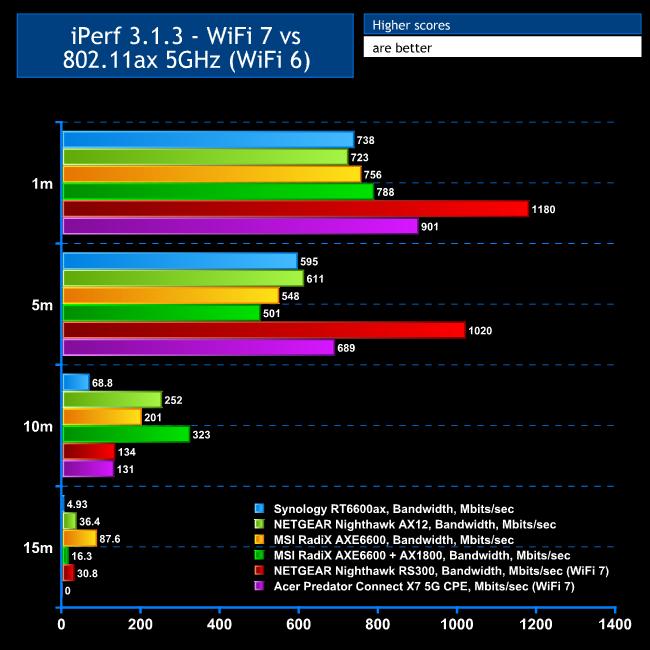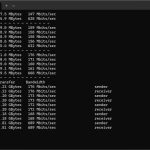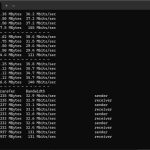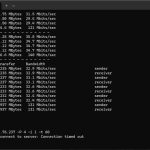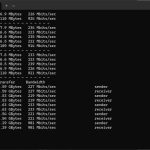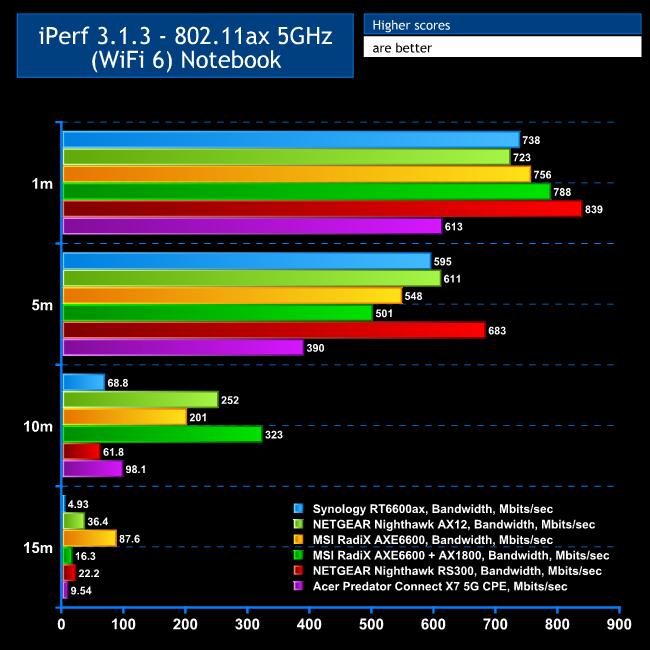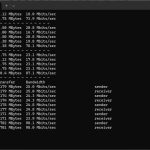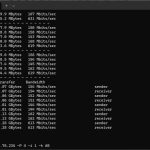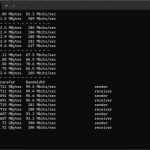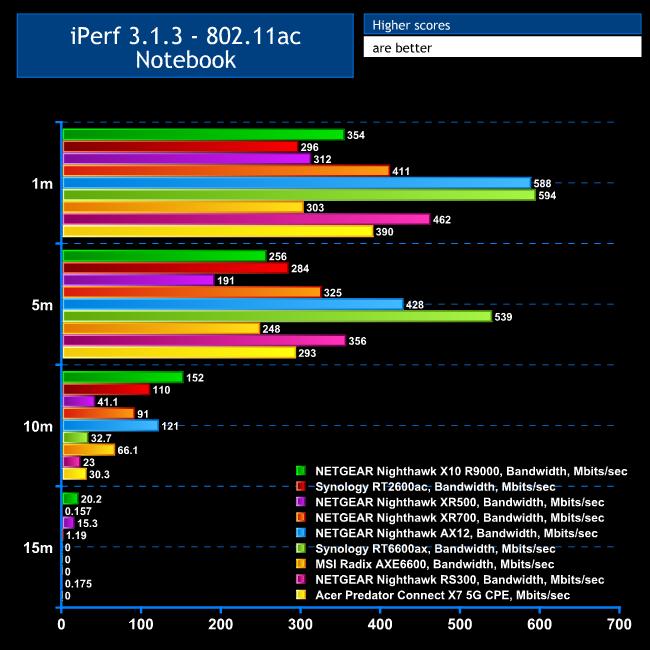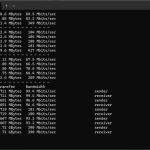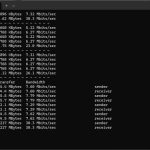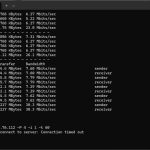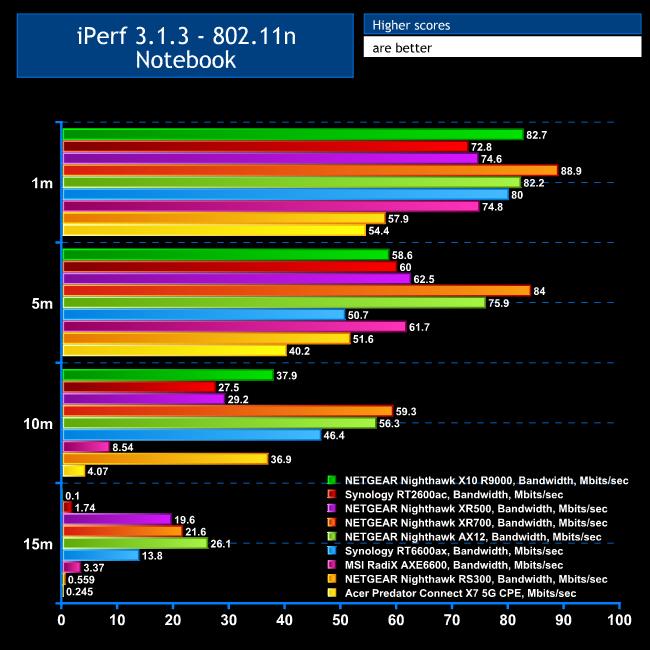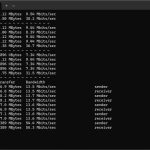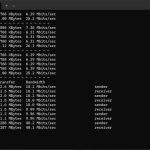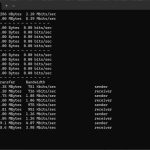We tested the raw throughput of the Acer Predator Connect X7 5G CPE across the four different WiFi standards it supports – 802.11be, 802.11ax, 802.11ac and 802.11n.
We used the open-source iPerf 3.1.3 software for testing, which can simulate multiple clients streaming at once. Five Windows systems were employed. Our desktop base was an Armari 32-core AMD Ryzen Threadripper workstation running Windows 11. For WiFi 7 testing, we used an Acer Swift 14 AI notebook, then a Dell XPS 17 notebook (for WiFi 6), a fourth was an MSI WS63-7RK (802.11ac) notebook, and finally an HP Folio 3 notebook (802.11n only – to show performance with legacy devices). The Acer and Dell notebooks and Armari workstation were running Windows 11 but the other two notebooks were Windows 10-powered.
Because 802.11be (WiFi 7) can theoretically greatly exceed the throughput of Gigabit Ethernet, we installed a 10Gbit Ethernet adapter into the Armari workstation. However, the Predator Connect X7 only offers Gigabit Ethernet ports for client devices, which we expected to cause a bottleneck when testing WiFi 7 in close proximity.
For all tests, the notebooks were tested using their various WiFi connections (802.11be / WiFi 7 for the Acer, 802.11ax for the Dell, 802.11ac for the MSI, 802.11n for the HP). The notebooks were then placed in four different locations – within 1m of the router, approximately 5m away with a wall in between, 10m away and on a lower floor (with multiple walls and a floor in between), and then 15m away on the same lower floor. We tested all four distances with the four WiFi standards.
With each WiFi standard and distance, we took 60 readings of throughput at one second intervals and calculated the average (iPerf does this automatically). We tested the RS300 against the MSI Radix AXE6600, NETGEAR Nighthawk X10 R9000, Synology RT2600ac, NETGEAR Nighthawk XR500, NETGEAR Nighthawk XR700, Synology RT6600ax, NETGEAR Nighthawk AX12, and NETGEAR Nighthawk RS300.
802.11be (WiFi 7)
As predicted, having to use a Gigabit Ethernet port for the wired connection did appear to be causing a bandwidth bottleneck. We used the MLO option on the Acer Predator Connect X7 to gain maximum benefit from WiFi 7.
While 901Mbits/sec at 1m close proximity clearly beats every WiFi 6 router we've tested, the NETGEAR Nighthawk RS300 was 31 per cent faster thanks to its 2.5Gbit Ethernet ports. It may be possible to hit this kind of speed with the Acer router between WiFi 7 clients that are all close together, but you won't get the full benefit of WiFi 7 for wired clients.
This story continued at 5m, with a very commendable 689Mbits/sec but the NETGEAR Nighthawk RS300 was 50 per cent faster.
At 10m, however, performance dropped in a similar fashion to the NETGEAR router. While 131Mbits/sec isn't that bad for this distance, lots of WiFi 6 routers did better at this range.
The Acer router couldn't maintain a signal at 15m, so failed the test entirely at this distance. This is disappointing, considering all the WiFi 6 and 7 routers we've tested at least maintained some connection.
Overall, while you are getting some bandwidth advantage from WiFi 7 with a compatible client, the difference from WiFi 6 is not so pronounced as with NETGEAR's RS300.
802.11ax 5GHz (WiFi 6)
While WiFi 7 is the latest and greatest, most of your wireless clients are likely to be WiFi 6 or even WiFi 5.
Sadly, the Acer Predator Connect X7 does not acquit itself well with WiFi 6.
At 1m, the throughput is actually worse than any other WiFi 6 or 7 router we've tested, although 613Mbits/sec could hardly be called slow.
The performance is even less commendable at 5m, with 390Mbits/sec way behind competitors.
The 10m result is an improvement. The bandwidth of 98.1Mbits/sec was actually 59 per cent faster than the NETGEAR Nighthawk RS300, and ahead of the Synology RT6600ax. However, other routers were still way ahead.
The Acer router did manage to maintain a signal at 15m with WiFi 6, and 9.54Mbits/sec is just about usable. But only the Synology RT6600ax was behind, with other routers much more usable.
While WiFi 6 will be more than adequately usable at 10m or less, we would have expected better from a premium router like this.
802.11ac 5GHz (WiFi 5)
You may still have a quite a few WiFi 5 / 802.11ac devices around, and fortunately the Acer Predator Connect X7 does a bit better with this standard.
At 1m, the throughput of 390Mbits/sec is in the middle of the pack against the competition. NETGEAR's Nighthawk AX12 and Synology's RT6600ax are a lot faster, but previous-generation WiFi 5 routers are mostly behind.
The Acer does relatively even better at 5m, with 293Mbits/sec bandwidth.
However, it falls behind most competitors at 10m, offering just 30.3Mbits/sec, and failed to pick up a signal at 15m.
In other words, you'll be fine using WiFi 5 devices that are under 10m from the router, but beyond that will be questionable.
802.11n 2.4GHz – Legacy
If you have any legacy 802.11n WiFi clients, the Acer Predator Connect X7 is not the router for you.
Even at 1m, its throughput of 54.4Mbits/sec is behind the competition.
This drops to a miserable 40.2Mbits/sec at 5m.
The router can barely get a signal at 10m, managing just 4.07Mbits/sec.
There is still some connectivity at 15m, but the throughput is 245Kbits/sec, which won't be usable.
Overall, the Acer Predator Connect X7 has disappointing performance for a premium router with state-of-the-art WiFi 7 capability. It does show some benefit from the new standard, but its WiFi 6 throughput is mediocre. While it's more competitive with WiFi 5 / 802.11ac, you will not want to use this router with 802.11n legacy devices.
 KitGuru KitGuru.net – Tech News | Hardware News | Hardware Reviews | IOS | Mobile | Gaming | Graphics Cards
KitGuru KitGuru.net – Tech News | Hardware News | Hardware Reviews | IOS | Mobile | Gaming | Graphics Cards


